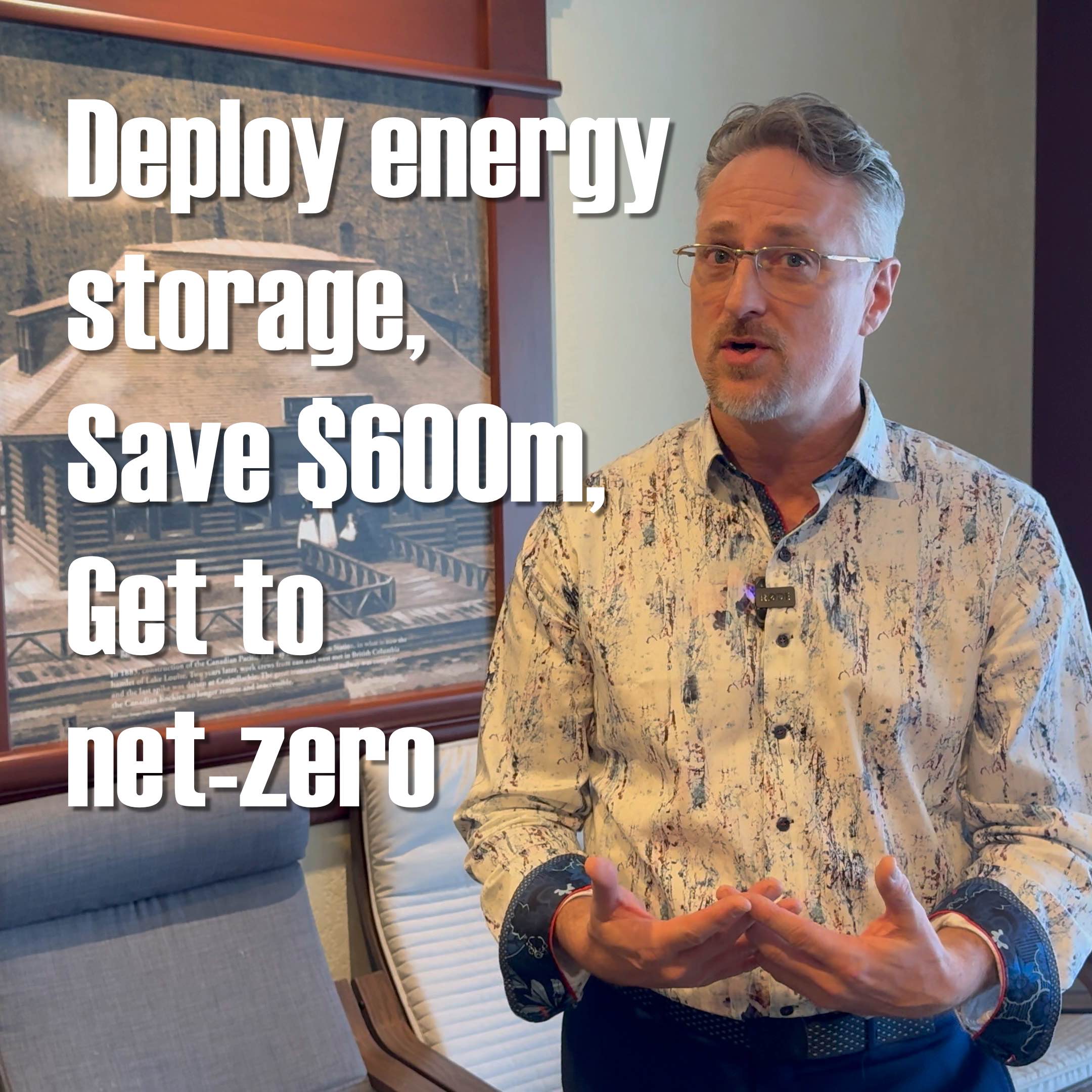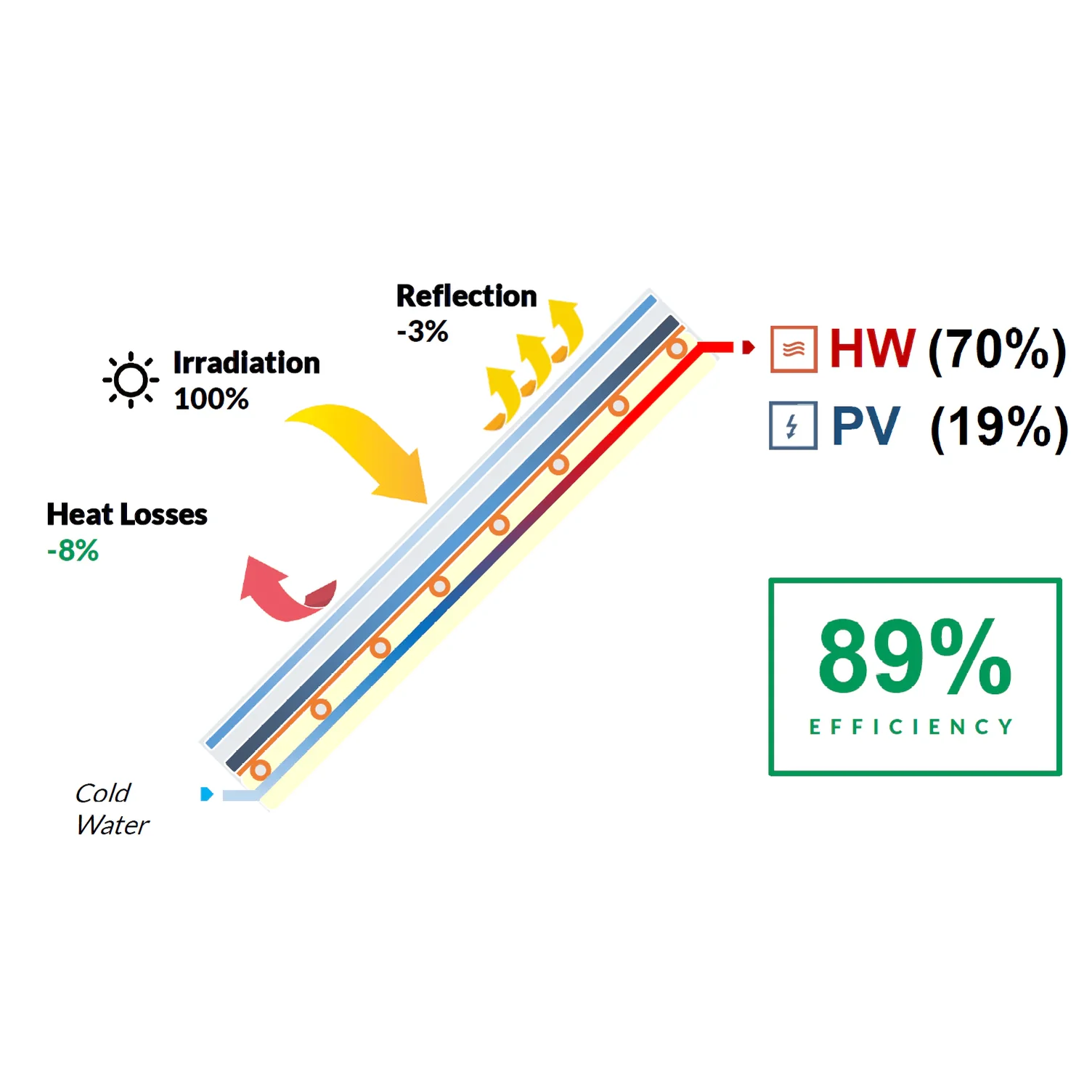By David Dodge, GreenEnergyFutures.ca
At the Decentralised Energy Conference in November, Robert Tremblay of Energy Storage Canada told the audience if you added 300 megawatts of energy storage to the Alberta electricity grid you could save up to $600 million.
We have all the tools we need to affordably get Alberta’s grid to net-zero already says Tremblay.
Tremblay said Energy Storage Canada and the Canadian Renewable Energy Alliance did the study on energy storage and they assumed that you buy energy at a low price store it and then sell it at a high price, referred to as energy “arbitrage.” This sounds like a pretty common-sense thing to do from a business perspective, but it also helps the grid satisfy peak demand and use more renewable energy.
Renewable energy such as solar and wind power sometimes produces too much energy at the wrong times and too little energy at other times, such as during the bleak mid-winter doldrums in Alberta.
“The sun isn’t always shining and the wind isn’t always blowing,” says Tremblay, but somewhere the sun is shining and the wind is blowing and part of the solution is to have a big enough grid to move energy to where it’s needed by expanding transmission to other jurisdictions.
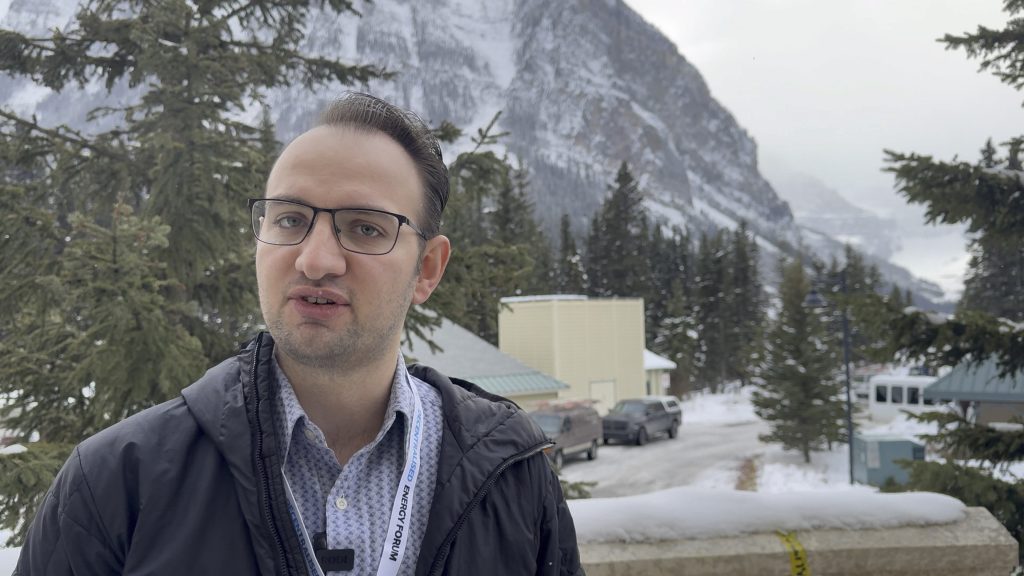
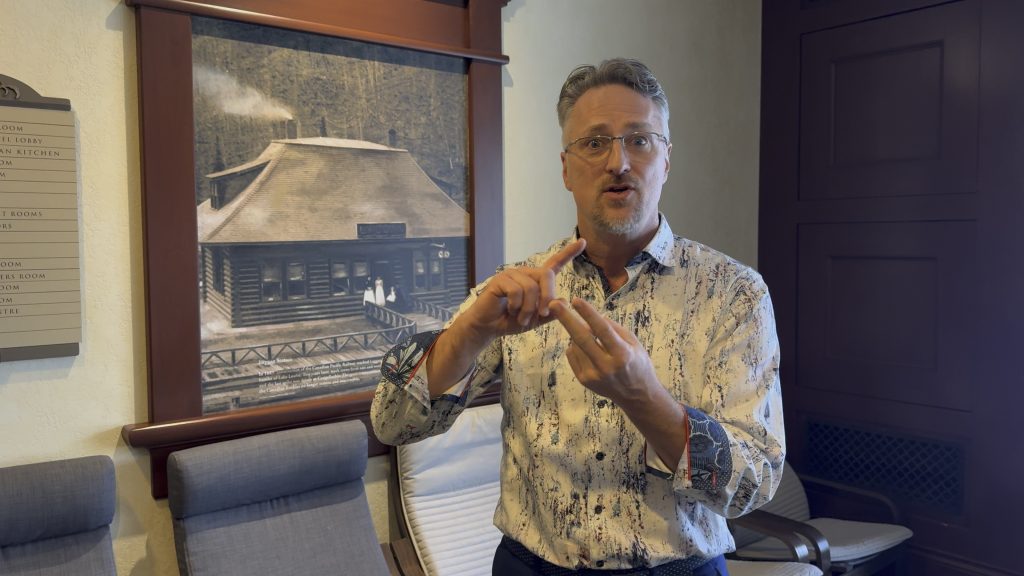
Net-Zero, no problem
“We used to have a centralized energy plant and we would send electricity out to the customer where ever it needed to be and we’d build the plant so we could meet the peak load,” says James Bererton the principal energy innovator at Stantec Consulting.
He says people have very little idea how much the grid has already changed and how much it will change in a very short time.
He says that the conventional centralized system “is not the way we’re going to do things in the future. We have prosumers now; we’re going to have a bi-directional distributed energy system.” Instead of a few large, centralized power plants, energy will be flowing to and from hundreds of thousands of microgenerators located at the point of use. There is still a big role for the grid to play, but the energy will not be flowing in one direction, but in a multitude of directions: from your solar rooftop to your neighbor’s refrigerator, from a solar farm atop a landfill to the brewery a few blocks away.
Indeed, Alberta already has more than 10,000 power producers where it had just a few dozen 20 years ago.
These “prosumers” are already participating in creating the future grid by adding solar, energy storage, electric vehicles and other technologies which are and will impact the grid significantly.
And significantly Bererton says all the technologies we need to build a net-zero grid already exist and can help create a resilient, more affordable, and low emissions grid.
Energy Storage big and small
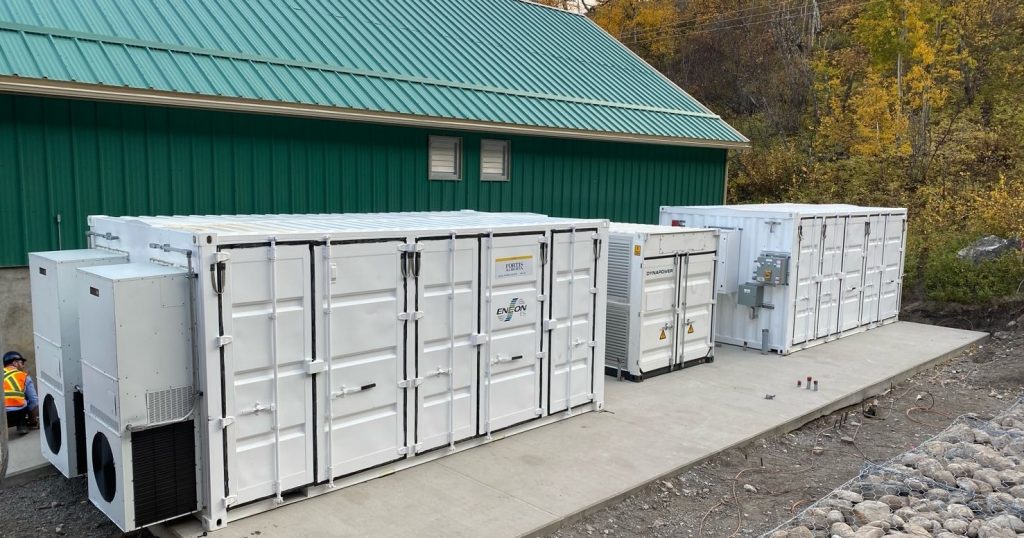
Short Term Energy Storage – 4 hours or less
“We’re going to need energy storage of all kinds: 10-minute storage to do UPS [uninterruptable power supply] and power conditioning. We’re going to need half-hour storage to do frequency response,” to keep the grid stable says Bererton.
“We’re going to do four hours of storage that grid operators can call upon for demand demand response,” to help respond to changes in energy demands.
We can use lithium-ion batteries for any application that requires four hours or less energy storage. The lithium batteries can be large-scale utility battery banks or they can be home scale solar batteries, or even our own Electric vehicles plugged in at home providing Vehicle to Grid energy during a 15-minute peak demand.
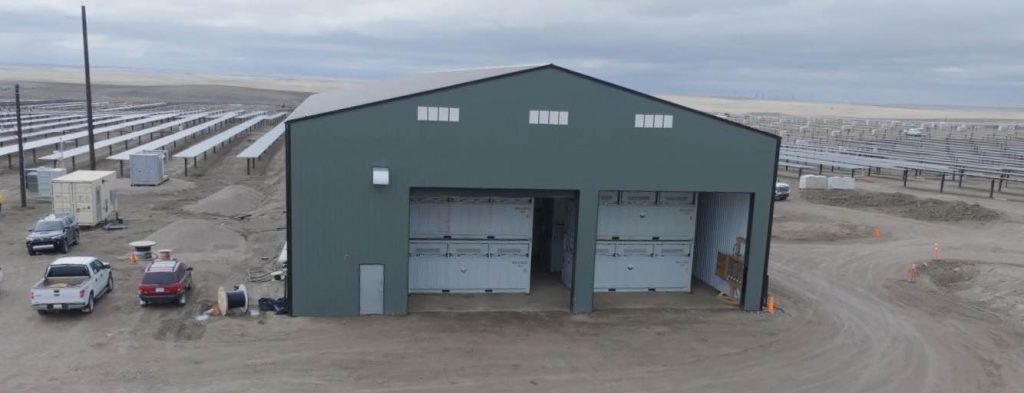
Medium Term Energy Storage
But we also need 12-hour energy storage to do arbitraging of energy and load shifting and smoothing, he says. This is the sort of storage Tremblay was referring to above which could net huge savings by taking excess energy such as solar produced midday and using it during the dinner peak in the early evening, for example.
But then we can also use seven-day energy storage to smooth peaks in electricity demand especially when our space heating demand is electrified and occurs during the coldest periods in winter.
Flow batteries can be used for these applications. Flow batteries store energy in chemical liquids very inexpensively and one of the largest was installed in Alberta first, an 8.4 megawatt Invinity vanadium flow battery system.
“Flow batteries are half the price of lithium batteries, so that’s what we need for that medium-term duration,” says Bererton.
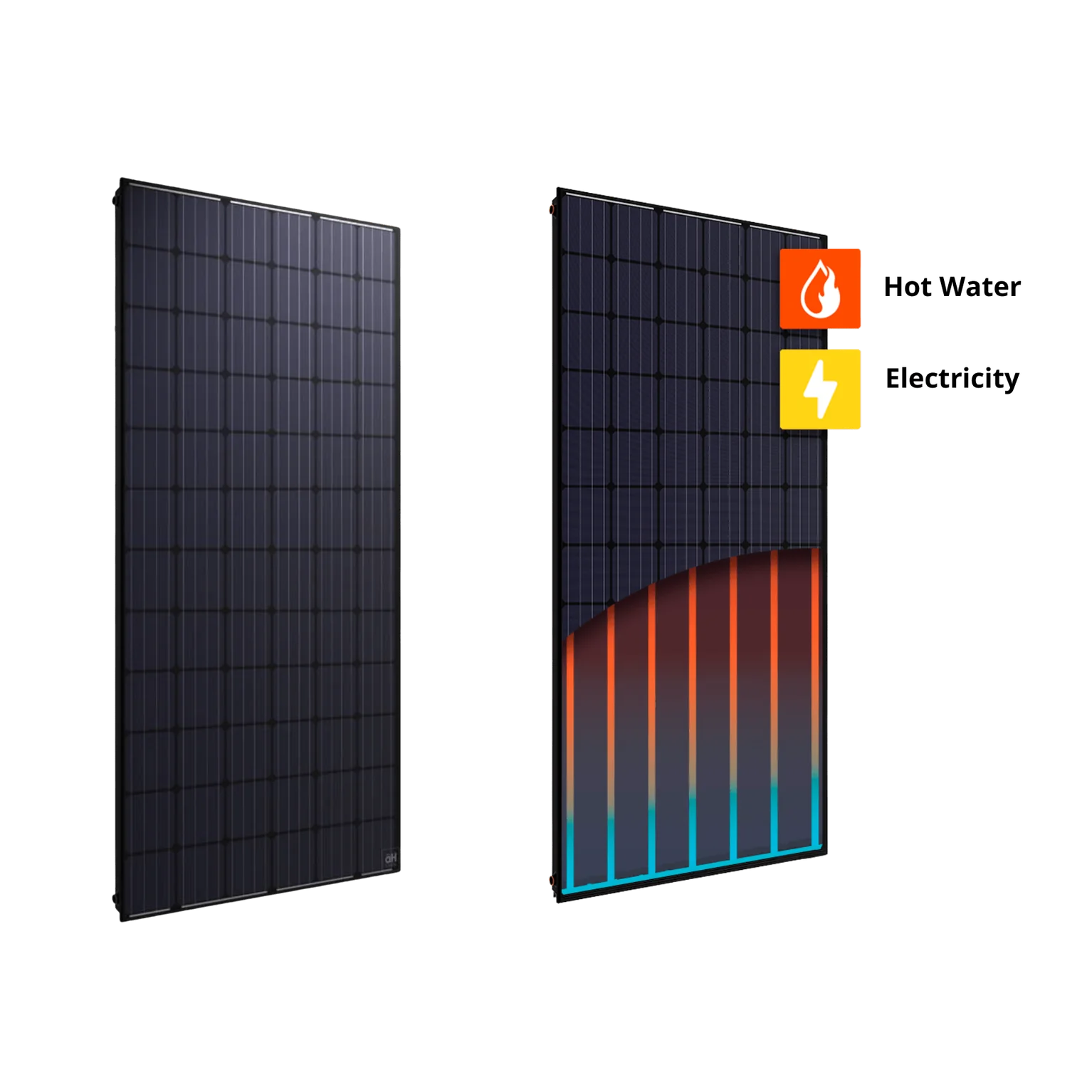
Longer Term Energy Storage
Two key ways of storing energy in the long term are thermal energy storage or by converting excess renewable energy to hydrogen and storing it for longer periods.
You can also get heat from cogeneration and heat pumps and Photovoltaic thermal hybrid solar collectors that produce both electricity and heat and the next generation of zero-emission cogeneration.
“We can use long-term thermal storage to get us right through that peak and ride right through it so there is no winter peak,” says Bererton.
“Thermal storage is about one-fourteenth the cost of lithium battery storage,” says Bererton.
“Then ultimately we do 180-day seasonal storage. We can produce heat and electricity from the summer sun and then shift it to the winter when we need it the most,” says Bererton.
The winter solar and wind power doldrums are often referred to by critics as a reason Alberta can’t go heavy into renewables or get to net-zero.
But Bererton says that integrating these technologies and energy “is how we’re going to solve this decarbonization problem and the future of electrification across a society everywhere.”
Use existing infrastructure, save $40 billion
Bererton says we can use existing infrastructure to handle the new demand that’s coming from the electrification of home heating and electric vehicles as well.
“In a single-family residential home, you use about eight per cent of the energy throughput capacity annually,” says Bererton.
Our grid has been designed to handle peaks in energy use which also means we have massive amounts of excess capacity most of the time.
“So, if we could just manage the peak so that we’re not all using energy at the same time, then we can make use of that capacity that’s already existing in our electrical infrastructure,” says Bererton.
Rather than investing $40 billion in expensive infrastructure upgrades, Bererton says energy storage, distributed energy, and the optimization of energy use can get us there for a fraction of the price and even save us money in the long run.
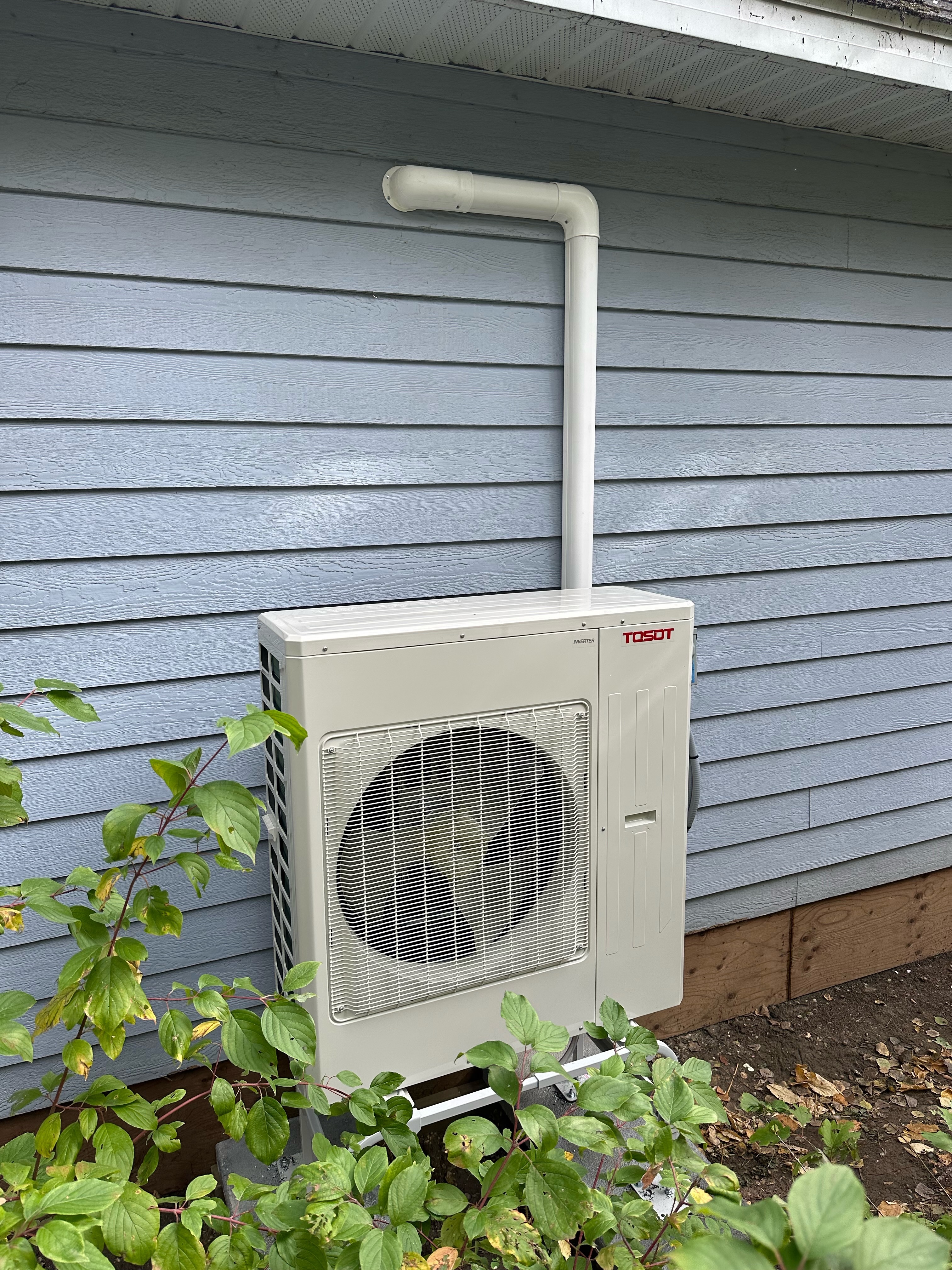
Make use of over-built grid
“It’s a win-win scenario. Instead of the existing grid averaging only eight per cent utilization, it’s going to harness 30 per cent of it without building or upgrading anything. That’s how we don’t spend $40 billion and we make $20 billion on the process,” says Bererton.
“The more we electrify and decentralize our energy, the further we’re pushing our grids beyond what they were initially conceived to do,” says Bererton.
But he says the technologies we are talking about are already 15 to 40 years old.
And innovation is changing what’s possible every day.
“Air source heat pumps have come from working at -5 Celsius 10 years ago to working down to minus 30 Celsius today.”
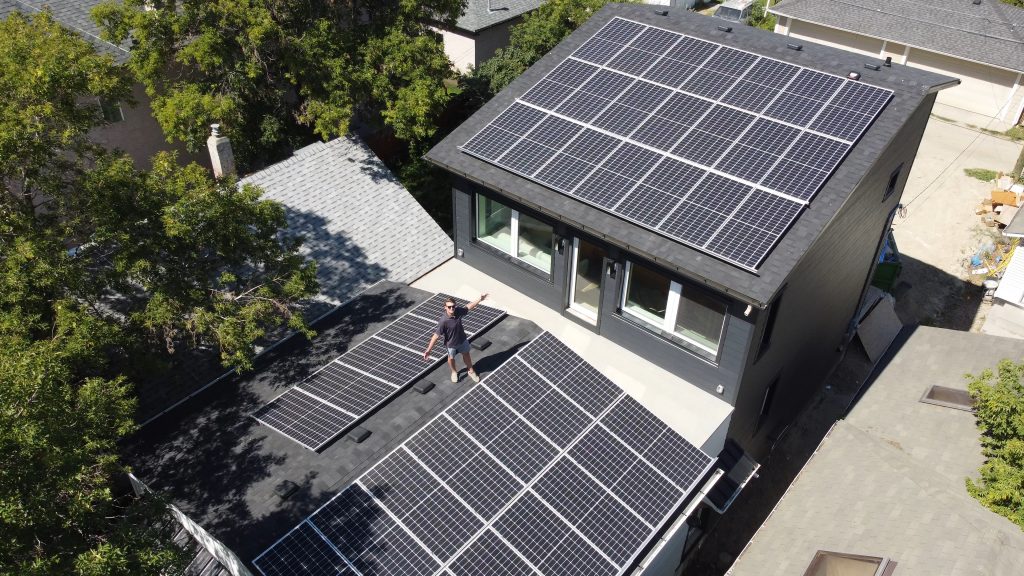
And the price of solar PV has plummeted too. When Bererton started looking at solar it cost $12 per watt to install. Today you can do it for $2.5 or less per watt. At grid scale, it’s under $1 per watt making solar the cheapest way to generate electricity in history.
And then there will be 250 million electric vehicles on the road by 2030. This could either be the biggest headache ever for the grid, or an incredible resource to help manage the grid.
“That’s 10 million megawatt hours [of energy storage]. All of the energy storage needs for the entire world will be driving around on our roads,” says Bererton.
“Obviously, we’re not driving all the time…those vehicles with bi-directional chargers can be part of the solution instead of this huge perceived part of the problem,” says Bererton.
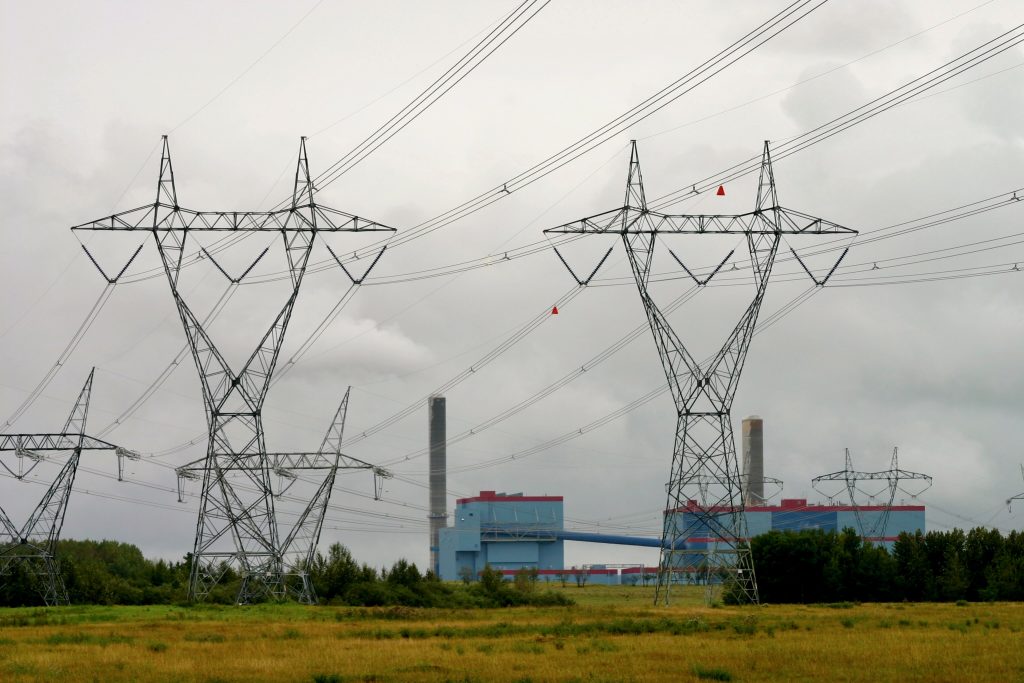
Chicken Little and the status quo are doomed
All the technologies we need for greatly expanded electricity use and heating already exist and what we need to do is take a holistic approach to managing how we produce electricity and heat.
The world needs a decarbonized grid and the momentum of developing new technologies is happening at a dizzying pace. Our choice today is to be part of the revolution and participate in this massive business opportunity or stand down like Chicken Little claiming the sky is falling and miss the boat.
What’s needed is not so much innovation and technology, but for governments and grid operators to get with the program and take down the barriers, change the tariff structures and regulations to support instead of hamper or even prevent needed changes from happening.
“We need to unlock the regulations that are barriers right now. We don’t have the tariff structures that will incentivize and support these new technologies and value them for the services they bring to the grid as opposed to what the grid gives to them. We need to change our utility structure,” says Bererton.
Our big-scale utilities with centralized generation and distributed loads will die because the technology will exist to make them go extinct. So, they either are going to go extinct or they’re going to play ball with the rest of these solutions and provide a harmonious integrated solution set,” says Bererton.
